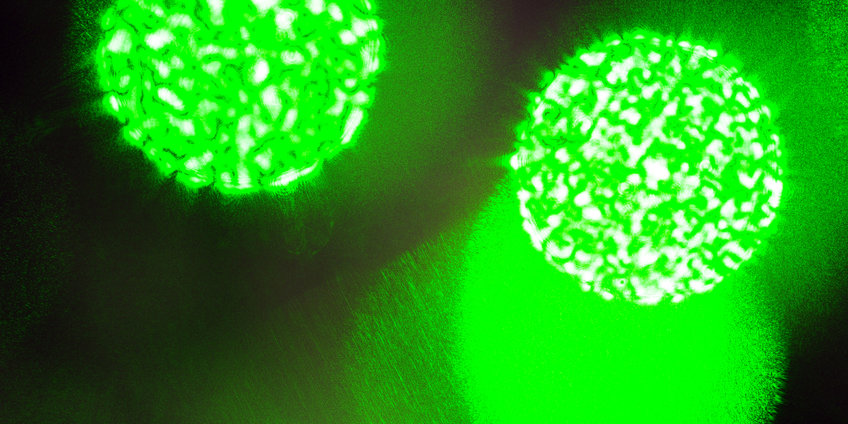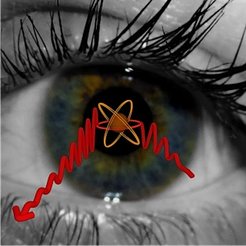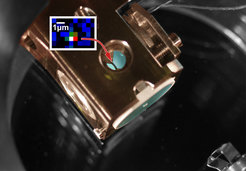
Quantum Dynamics
Director: Prof. Dr. Gerhard Rempe
En Route to the New Quantum World - Even one century after its discovery quantum physics still remains extremely fascinating. This is because the quantum world is so radically different from the classical world of our everyday experience.One of the most striking and counterintuitive properties of quantum systems is the possibility to encode information between the individual constituents, not in the constituents. Thanks to the many possible concatenations that are simultaneously permitted between the constituents, quantum systems can carry much more information than classical systems. Only now one begins to understand the revolutionary possibilities which are opened up by such entangled systems both for fundamental investigations and novel applications.

Investigating the quantum world and making quantum effects available for future applications in particular in the processing of information are main focal points of our research. The experiments essentially follow two different strategies: One is devoted to the development of interfaces between the classical world and the quantum world. 'Workhorses' are individual atoms and tailor-made photons in optical resonators of the highest quality. Examples of this research are the novel light sources developed in our laboratory which at the push of a button emit a bit stream of single photons or even entangled photons. We are also aiming to increase in a systematic manner the size of our quantum systems by adding one-at-a-time more and more atoms or photons. In this way we want to find out if and how it is possible to realise a distributed quantum network or even a quantum internet, with single photons exchanging information between nodes.

This strategy of increasing the size of small systems by stepwise adding additional components is complemented by a second strategy which starts with a large system and which aims to improve the control over the individual constituents. This work is largely performed with quantum gases at temperatures close to absolute zero. Such gases differ from classical gases in that all atoms together form a gigantic matter wave. They are ideally suited to perform quantum simulations and in this way explore open questions of many-body physics. Compared to electrons in solid-state crystals, quantum gases have several advantages, for example that the atoms and molecules we use are much easier to observe, that these move on length scales of micrometers instead of nanometers, and that it is relatively straightforward to change the dimensionality of the system by freezing out the motion along certain directions. We also develop novel methods to produce and trap gaseous samples of polar molecules like water at temperatures below one Kelvin. With such gases we plan to investigate novel classes of chemical reactions at very low temperatures, to name just one example.
Experiencing the beauty and diversity of quantum physics in laboratory experiments and developing the quantum technology of the future is a most rewarding experience.

